Back In 2011, a Swiss company New7Wonders, already famous for updating the list of World Wonders, embarked on a new project. They aimed to identify the 7 natural wonders of the world. To achieve this, they turned to the public, gathering votes from over 500 million people worldwide. The public’s choice highlighted seven extraordinary locations, each celebrated for its breathtaking beauty, rich natural diversity, significant ecological importance, and deep historical legacy.
- 1. Amazon Rainforest (South America)
- Amazon river cruises
- Inca Trail
- 2. Ha Long Bay (Vietnam)
- How to see
- 3. Iguazu Falls (Argentina and Brazil)
- Wildlife of the area
- 4. Jeju Island (South Korea)
- 12 Must-not-miss Adventures on Jeju Island
- 5. Komodo Island (Indonesia)
- More to see
- 6. Table Mountain (South Africa)
- 7. Puerto Princesa Underground River (Philippines)
- Planning the trip
- Read more
These wonders range from towering mountain peaks to vast underwater worlds, each telling its unique story of formation and survival. This list is particularly special as it reflects the choices of a vast global community, showcasing the places that have captivated and inspired people across different cultures and backgrounds. Read on to learn about these must-see natural hotspots, ideal for the most daring and curious adventurers.
1. Amazon Rainforest (South America)
The Amazon Rainforest, often referred to as the “Lungs of the Earth,” is the world’s largest tropical rainforest and spans across nine South American countries: Brazil, Suriname, Bolivia, Guyana, Venezuela, Colombia, Ecuador, Peru, and Guiane. It covers approximately 5.5 million square kilometers (2.1 million square miles) and is home to a staggering array of biodiversity. The Amazon River, which winds through this lush paradise, is the second-longest river in the world. This wondrous ecosystem teems with countless species of plants, animals, and indigenous cultures.
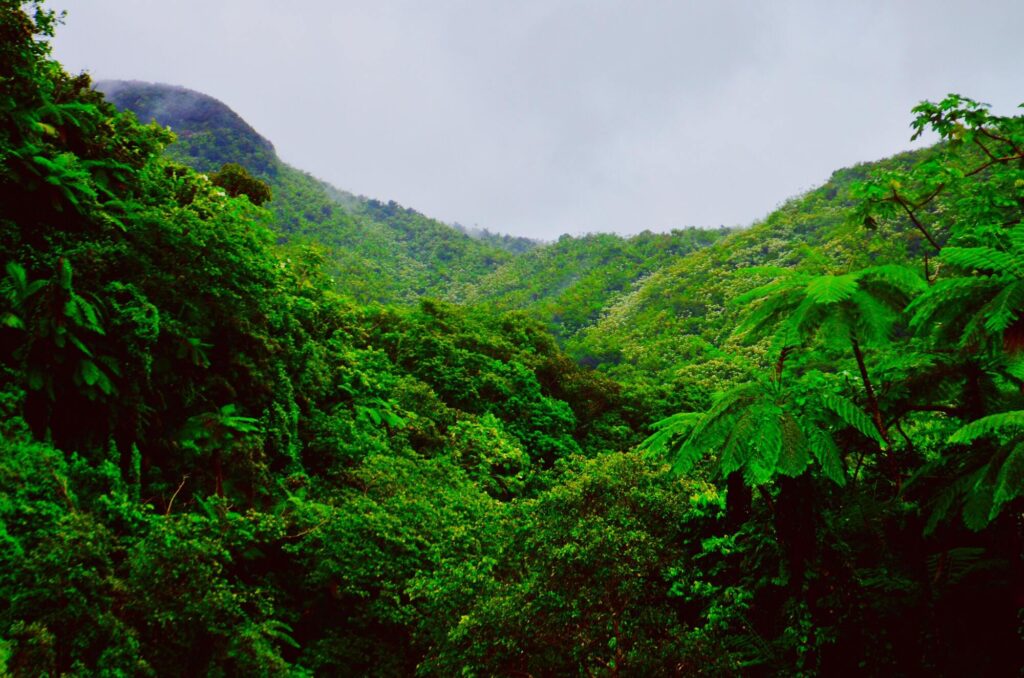
Location: As you may guess, the jungles of the Amazon Rainforest are pretty large the major part of it lies in Brazil. The best way to explore this beauty is by taking a cruise on the Amazon River or one of the vigorous treks like the Inca Trail.
Amazon river cruises
Amazon river cruises usually navigate through Brazil, Peru, and Colombia, giving travelers an up-close view of the world’s largest river by discharge. You can spot exotic animals like pink dolphins and capybaras, and visit remote villages to learn about local cultures. The cruises may vary in length and comfort, from luxury liners to more basic boats, catering to different budgets and adventure levels.
Inca Trail
If you are not a fan of sailing, you can opt for Inca Trail, one section of it goes through the Amazon Rainforest. This is an iconic trek in Peru, that leads adventurers to the ancient city of Machu Picchu. Spanning 26 miles, it’s typically a four-day hike through breathtaking Andean landscapes and past historical Inca sites. The trail starts at the 82 km marker and ascends to 13,828 feet, offering views of diverse ecosystems. Daily permits, capped at 500 including guides and porters, are required for this popular hike.
2. Ha Long Bay (Vietnam)
Ha Long Bay, located in northeastern Vietnam, is a natural masterpiece of towering limestone karsts and emerald waters. It is believed to have up to 2,000 islands, islets, and karst formations. Some of them are rising over 200 meters (656 feet) from the sea and altogether create a surreal seascape. Visitors can explore the bay’s caves, grottoes, and floating fishing villages. Ha Long Bay’s ethereal beauty and tranquil ambiance make it a UNESCO World Heritage Site and a must-visit destination for nature lovers.
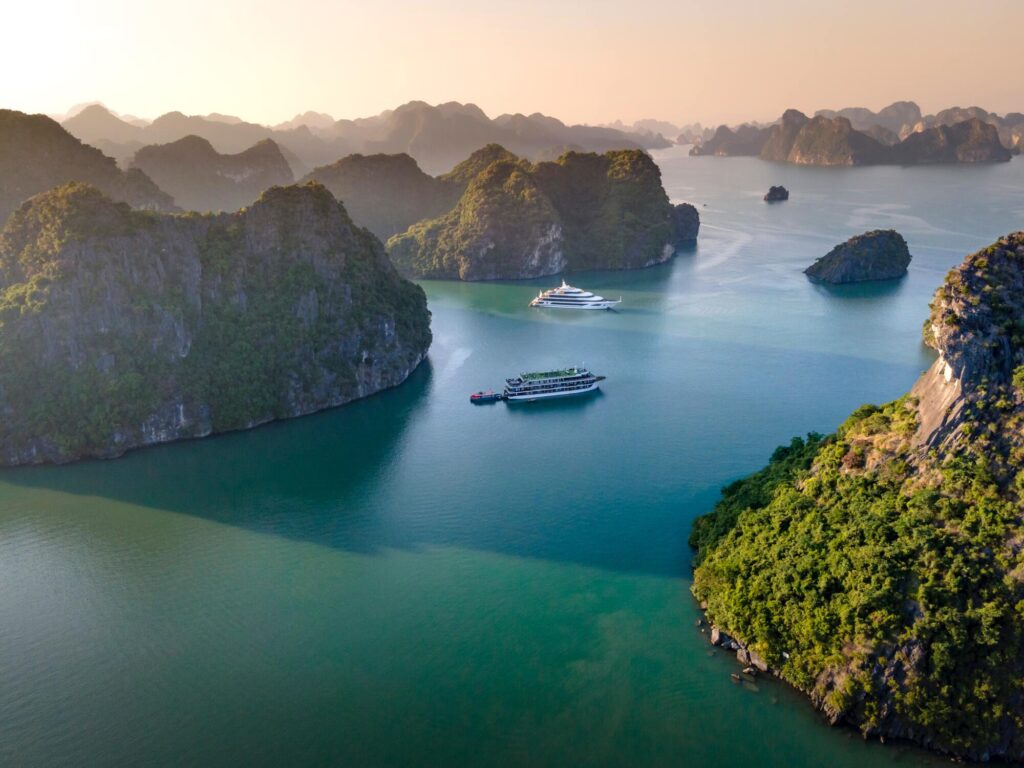
Location: Ha Long Bay is located in Quảng Ninh Province, which is on the North-Eastern coast of Vietnam.
How to see
Getting to Ha Long Bay itself is not hard, it’s located some 160km (less than 100 miles) from Hanoi. Yet to be able to capture all of its beauty, you will most likely need to board on a cruise. These cruises offer a chance to explore caves, swim in the bay, and enjoy activities like kayaking. Ranging from day trips to overnight stays, the cruises cater to different preferences and budgets. Many include visits to local fishing villages and floating markets, providing a glimpse into the traditional lifestyle. Ha Long Bay is not only a scenic marvel but also a place rich in biodiversity. The area is home to numerous species of fish, mollusks, and endemic flora, thriving in its unique marine and island ecosystems.
3. Iguazu Falls (Argentina and Brazil)
Iguazu Falls, straddling the border between Argentina and Brazil, is one of the world’s most spectacular waterfall systems. The falls consist of approximately 275 individual cascades that span nearly 2.7 kilometers (1.7 miles) and reach up to 82 meters (270 feet) in height. The power and grandeur of the falls are awe-inspiring as water plunges over cliffs into the foaming river below. Iguazu Falls were recognized as a UNESCO World Heritage Site in 1984. The surrounding areas are forming Natural Parks on both sides of the river.
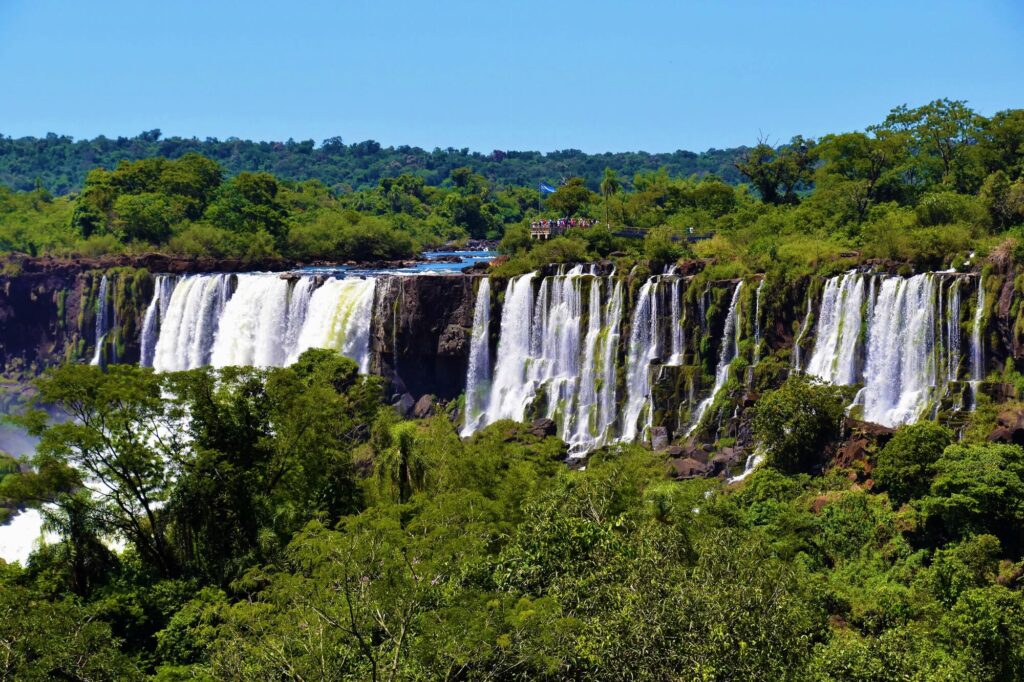
Location: Iguazu Falls, located on the Iguazu River, at the border between the Argentine province of Misiones and the Brazilian state of Paraná, close to Curitiba city.
Wildlife of the area
As mentioned Brazil hosts 2 of the 7 natural wonders, so if you want to make a trip to withhold Iguazu Falls, you can have your eye on the Amazon Rainforest as well.
Iguazu Falls boasts a unique array of wildlife, exclusive to this region. During your visit to the national parks, you’ll likely encounter coaties, small, long-tailed four-legged animals known for scavenging food from visitors, though feeding them is discouraged for safety reasons. Toucans are another common sight, especially in trees along the Devil’s Throat circuit. The parks are also a haven for bird enthusiasts, with numerous species visible throughout your journey.
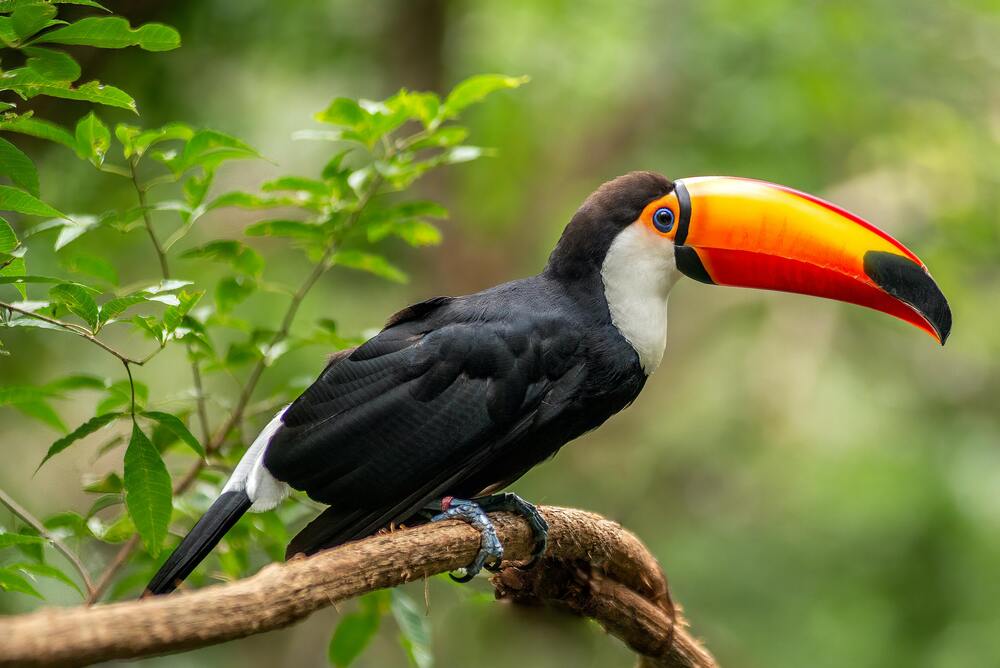
Photo by Tiago L BR @ Pexels
While more elusive, the monkey caí, often found in groups, is also present in the park. Like coaties, they may approach tourists for food, but feeding them is not advisable.
Other animals, such as the yaguareté, a threatened feline species, reside in the area but are rarely seen within the park as they tend to avoid human contact. The tapir, one of Latin America’s largest mammals, is also in the vicinity. Spotting them can be challenging, but dedicated night tours in the Uruguay-i provincial park offer opportunities to see them.
The Bird Park in Foz de Iguazu and Guira Oga in Puerto Iguazu are excellent options. These centers focus on rehabilitating animals injured on roads or rescued from trafficking. The animals visible here are those unable to return to their natural habitat.
4. Jeju Island (South Korea)
Jeju Island is the biggest island that belongs to South Korea. It is a volcanic island known for its stunning landscapes, unique geological features, and cultural heritage. It boasts pristine beaches, lush forests, lava tubes, and the iconic Hallasan, South Korea’s highest peak. The volcanic lava tubes of Jeju Island are UNESCO World Natural Heritage Site. Jejudo is the only territory of South Korea that has a tropical climate and is often referred to as Korean Hawaii.
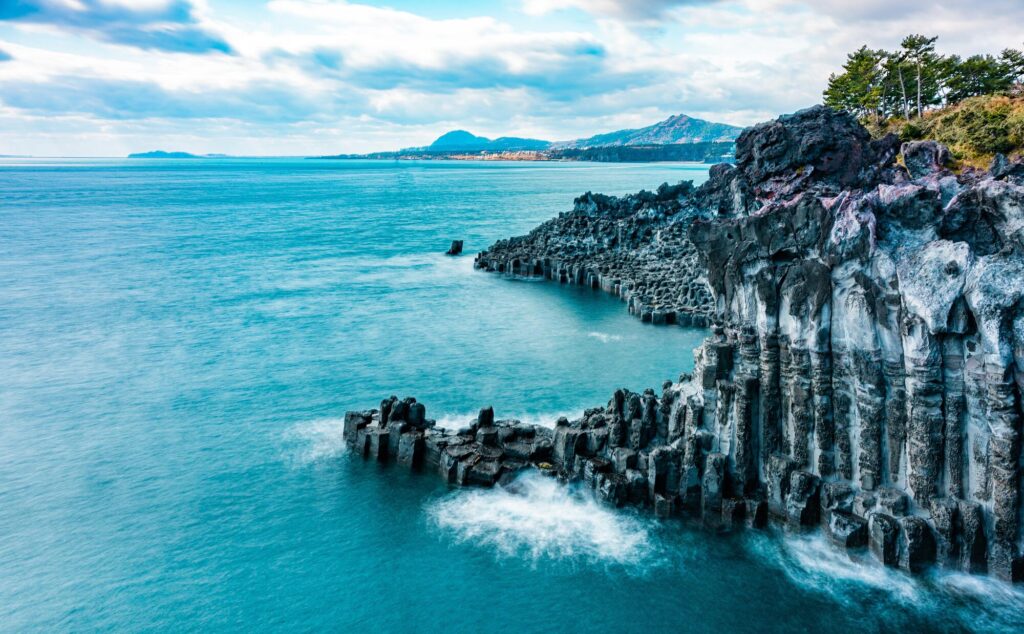
Location: Jeju Island is located off the southern coast of South Korea. The flight from Seoul is short – only 1 hour. it has an airport and a variety of hotels to stay in.
12 Must-not-miss Adventures on Jeju Island
Jeju Island is a haven for nature lovers. This volcanic island offers a myriad of natural attractions, from breathtaking beaches to lush green landscapes. Here are some must-see sights and activities for any visitors.
1. Hallasan Mountain
At the heart of Jeju Island, Hallasan Mountain stands as South Korea’s highest peak at 1,947 meters. It’s a dormant volcano with well-marked trails leading to the summit. Hiking up Hallasan is a full-day activity, but the panoramic views from the top are worth every step. On a clear day, you can see across the entire island!
2. Jeju Olle Trails
For those who enjoy long walks, the Jeju Olle Trail is a network of 26 paths covering 425 kilometers around the island. These trails take you along the coastline, past beaches, through small villages, and up into the hills, offering a great way to explore Jeju’s diverse landscapes.
3. Seongsan Ilchulbong Peak
Known as Sunrise Peak, a volcanic crater with a unique crown shape, formed around 5,000 years ago. A climb to the top for sunrise offers a breathtaking view, with the sun rising over the sea.
4. Manjanggul Cave
One of the longest lava tubes in the world, Manjanggul Cave stretches for about 7.4 kilometers, though only a portion is open to the public. Inside, you’ll find incredible rock formations and a massive lava column, standing 7.6 meters high.
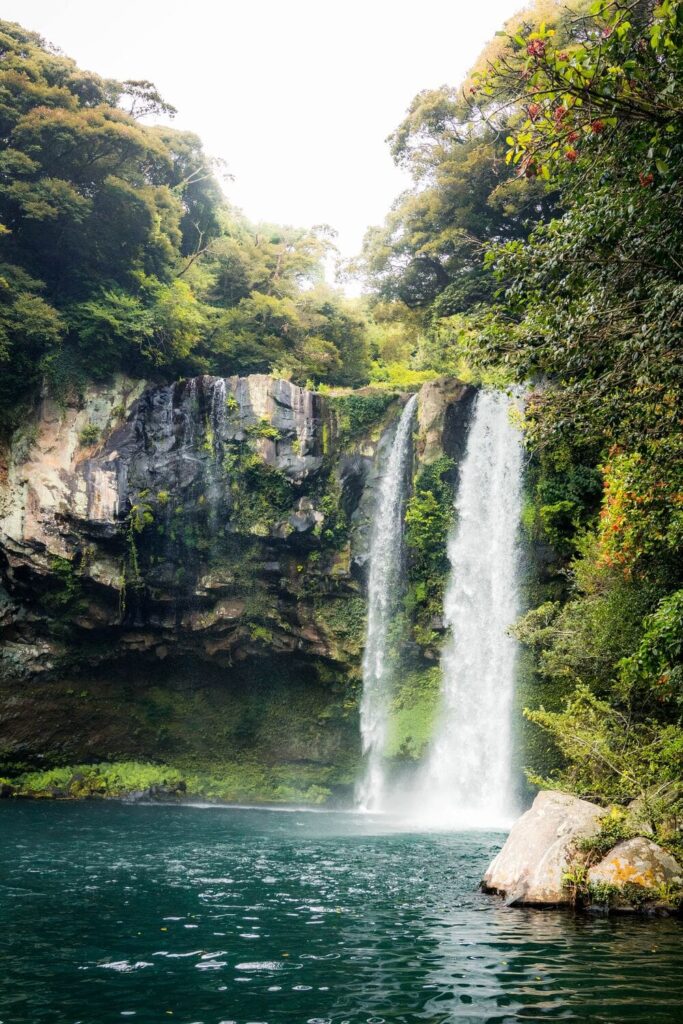
5. Jeongbang Waterfall
This is the only waterfall in Asia that falls directly into the ocean. Standing at 23 meters high, it’s a spectacular sight, especially when you walk right up to where the water meets the sea.
6. Cheonjeyeon Waterfall
Named after the legend of the seven nymphs who descended from heaven at night, this three-tiered waterfall is surrounded by lush greenery, making it a serene spot for nature lovers.
7. Beaches
Jeju Island is ringed with stunning beaches. Hyeopjae and Hamdeok are known for their emerald waters and fine sand, perfect for swimming and sunbathing. For a more secluded experience, visit Woljeongri Beach, known for its tranquil setting and clear waters.
8. Jusangjeolli Cliff
These cliffs were formed when lava from Hallasan Mountain met the sea. The result is a series of hexagonal rock pillars that create a spectacular natural sculpture.
9. Udo Island
A short ferry ride from Jeju, Udo is a smaller island off the eastern coast. It’s known for its crystal-clear waters, white sand beaches, and the peanut ice cream that is a must-try.
10. Bijarim Forest
Home to a large number of nutmeg trees that are over 500 years old, this forest offers a peaceful retreat. The air here is said to be therapeutic, making it a great spot for a leisurely walk.
11. Baengnokdam Crater Lake
At the summit of Hallasan Mountain, this crater lake is a sight to behold. It’s a symbol of Jeju, representing the island’s volcanic origins.
12. Yeomiji Botanical Garden
Boasting one of the largest greenhouses in Asia, this botanical garden has a diverse collection of plants from tropical and subtropical climates.
Jeju Island is not just a typical tourist destination; it’s a natural wonder that offers something for everyone, whether you’re an avid hiker, a beach lover, or just someone looking to enjoy the tranquility of nature. With its rich volcanic landscape, diverse flora and fauna, and breathtaking natural sights, Jeju is a place where nature’s beauty is on full display.
5. Komodo Island (Indonesia)
Komodo Island is a part of the Lesser Sunda Islands in Indonesia. It is famous for one of the world’s most ancient and fearsome creatures — the Komodo dragon. These massive reptiles, known as the world’s largest lizards, roam freely on the island. The rugged terrain, diverse marine life, and unique flora contribute to the island’s status as a UNESCO World Heritage Site and a biological wonder.

Location: Komodo Island is located in Indonesia, between the islands of Sumbawa and Flores. It’s part of a group of islands including Rinca and Padar, forming Komodo National Park. Your journey typically starts with a boat ride from Flores or Sumbawa.
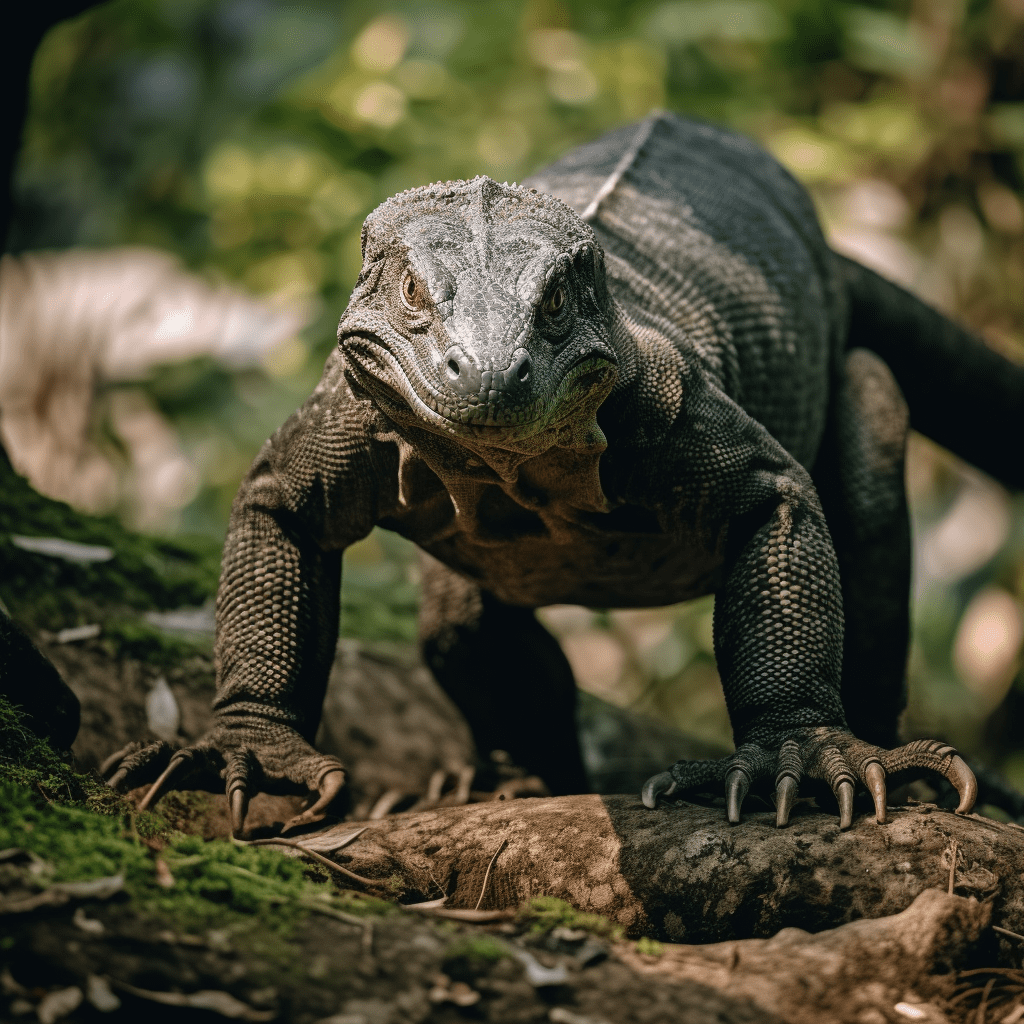
As you wander through Komodo Island, the presence of the Komodo dragons is unmistakable. These formidable reptiles, the planet’s largest lizards, can measure up to 3 meters and weigh over 70 kilograms. Spotting one lounging or stalking through the underbrush is a heart-racing highlight of any visit.
More to see
But Komodo Island isn’t just about these giant lizards. It’s a place of stark natural beauty, with a landscape that ranges from dry, rugged hills to dense mangrove forests. It’s a contrast that’s unexpected, yet utterly captivating.
Diving and snorkeling around the island are experiences in their own right. The waters here form part of the Coral Triangle, known for its astounding marine biodiversity. You can swim alongside manta rays, explore vibrant coral reefs, and even encounter dolphins and turtles.
The island’s terrain is a hiker’s dream. Trails wind up hills and across fields, offering panoramic views of the surrounding seas and islands. It’s not uncommon to see other wildlife, like Timor deer and water buffaloes, which are essential to the Komodo dragon’s diet.
Birdwatchers will find a treasure trove on Komodo Island. The island is a haven for avian species, including the orange-footed scrubfowl and the lesser sulphur-crested cockatoo. Their calls add a soundtrack to the island’s serene atmosphere.
One of the most striking features of Komodo Island is Pink Beach, one of only seven in the world. The sand’s unique color comes from red coral fragments mixed with white sand, creating a surreal and beautiful coastal landscape.
6. Table Mountain (South Africa)
Table Mountain, overlooking the city of Cape Town in South Africa, is a flat-topped mountain that stands as an iconic natural wonder. It is known for its distinctive shape, stunning vistas, and rich biodiversity. The mountain is home to a wide variety of flora and fauna, including the rare Table Mountain ghost frog.
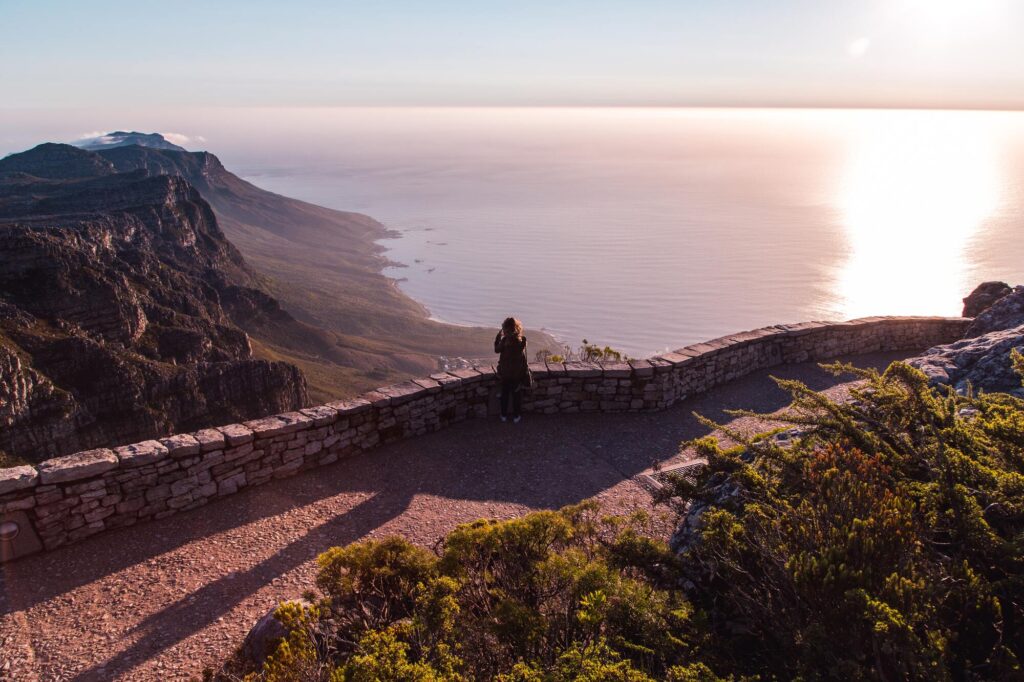
Perched 21 meters above the Upper Cableway Station, Maclear’s Beacon stands as the loftiest point on Table Mountain at 1,085 meters, making it the highest place you can reach in Cape Town. To start your hike, follow the signs from the cable station that lead you to the trailhead. The 5.5km path to the beacon is easily navigable, with yellow footprints marking the way, and should take about 2 hours for a round trip. Prepare to use chains and handholds as you climb a brief rocky stairway clinging to the mountain’s edge. Tackle both the Platteklip and Maclear’s Beacon trails back-to-back, and you’ll have the bragging rights of having trekked from the base to the summit of Table Mountain!
Location Details
For those who crave a lengthier hike, venture southeast from Maclear’s Beacon to discover Table Mountain’s five dams: Woodhead, Victoria, Alexandra, De Villiers, and Hely-Hutchinson, the latter being known for its unusual white-sand beach. Remember, this scenic spot is only reachable if you ascend the mountain via Skeleton Gorge.
However, Table Mountain is not the only unique experience Cape Town has to offer: there are also unique hiking routes, winelands, wildlife watching, a Big Five safari, and a lot more.
7. Puerto Princesa Underground River (Philippines)
The Puerto Princesa Underground River, located in Palawan, Philippines, is a subterranean river system that flows through a cave before emptying into the South China Sea. This unique geological formation is a UNESCO World Heritage Site and one of the New 7 Wonders of Nature. The cave features impressive stalactites and stalagmites, and the underground river is home to diverse wildlife, including bats and marine creatures.
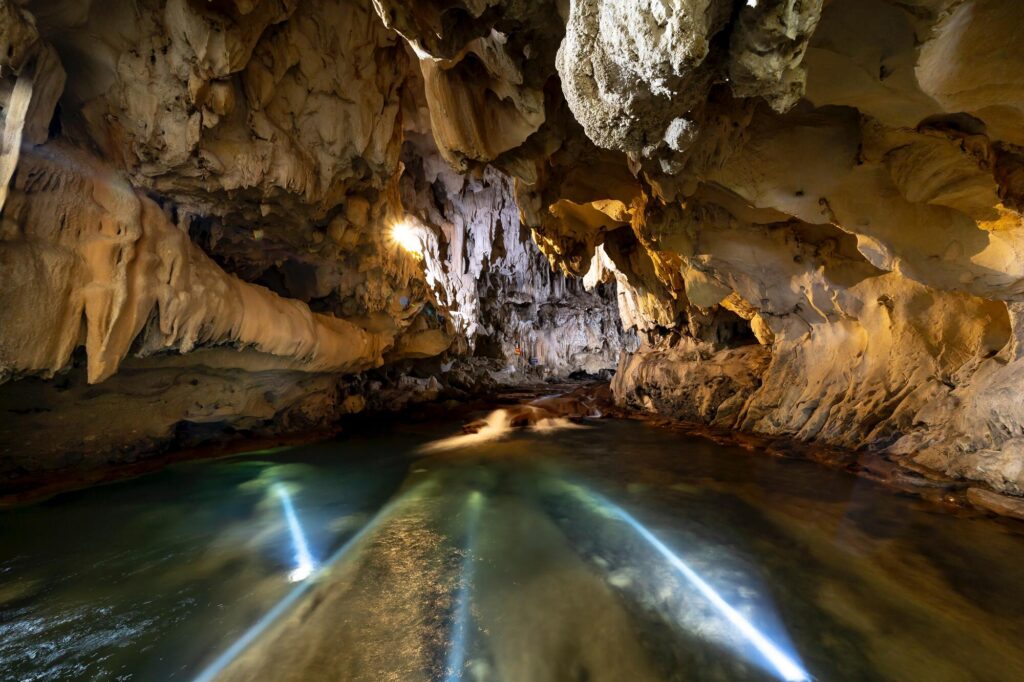
Location: Puerto Princesa Subterranean River National Park is some 80km (approx. 50 miles) away from the city center, you can get there by bus or private car. But before going you need to get a permit first at Puerto Princesa’s City Coliseum.
Flowing beneath the St. Paul Mountain Range on Palawan Island’s mid-western coast, the river carves its path through limestone, forming a sprawling network of caverns and grand chambers over millions of years. This subterranean cave system, extending 24 km (approx 15 miles) under the mountains, welcomes visitors into its depths where the river meets the sea.
Within these darkened caves thrives a unique ecosystem, one that has evolved over centuries to adapt to the underground environment. The cave-dwelling wildlife includes endemic species such as specialized spiders, crabs, fish, and snakes. However, when you navigate the caves, the creatures you’re most likely to encounter are bats and swallows darting in the cave’s dim light.
Planning the trip
Puerto Princesa is the capital of the archipelago Palawan. The best time to go is during the so-called ‘dry season’, which is from November to May. You can get there by air from all of the Philippines’ major airports, bus, or ferry. Apart from visiting Puerto Princesa Subterranean River National Park, you can do island hopping, visit the crocodile farm, ride the zip line in jungles, and do many other adventures. So feel free to plan a longer stay, you will not be bored.
What are the 7 natural wonders of the world?
According to the voting the seven natural wonders are: Puerto Princessa(underground river) in Philippines, Table Mountain in South Africa, Amazon Rainforest spanning 9 countries in South America, Indonesia’s Komodo Island, Jeju Island in South Korea, Ha Long Bay in Vietnam, Iguazu Falls in Argentina and Brazil
Did UNESCO include 7 natural wonders of the world?
Yes, all of them are included into UNESCO heritage list, but in most cases they are a part of bigger property like national parks they reside in
Is Iguazu Falls one of the wonders of the world
Yes, Iguazu Falls is one of the 7 natural wonders






